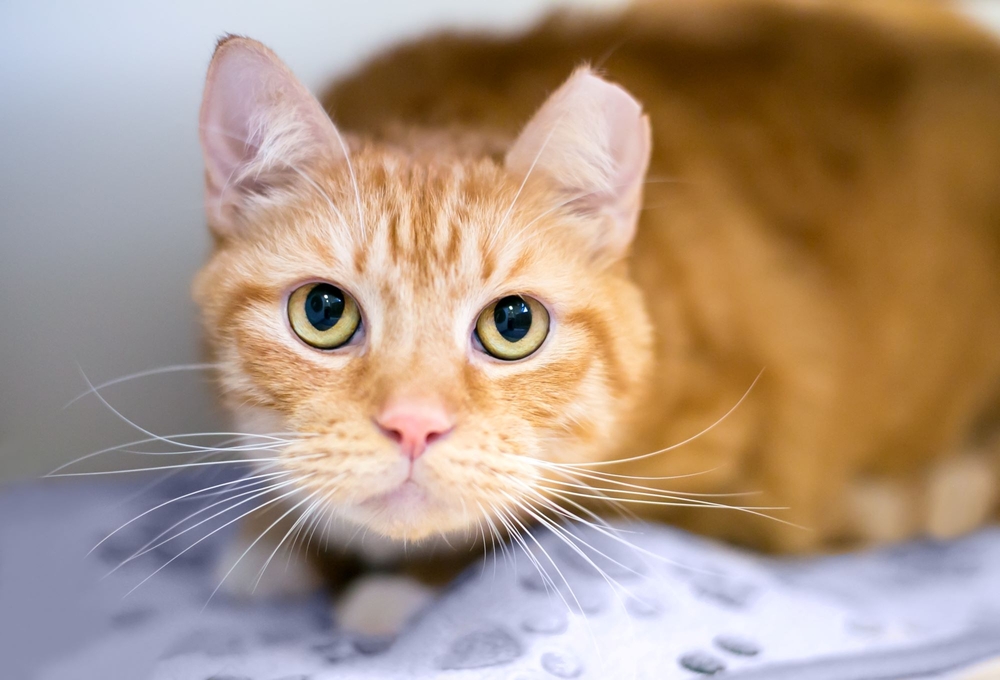Published
- 5 min read
Why is this cat missing his ear tip?

If you’re out and about in any community in America, eventually, you’ll see a cat missing part of its left ear. An “ear tip cat” is one that has been spayed or neutered in a trap-neuter-return (TNR) program. This is a management strategy for stray cats.
“Ear tipping” community cats lets us know that this cat has successfully undergone a neuter surgery. It is especially helpful to see a tipped ear because community cats often will not let you come close to check their genitals.
A successful ear tipping looks unnatural. It is a parallel line across the ear. If there’s an ear missing - it’s not a tipped ear. The ear tipping procedure is done during the spay or neuter surgery, has little or no bleeding, and the ear heals quickly. In most parts of the country, ear tipping is done on the cat’s left ear. But really, whether it’s the left ear or right ear, a cat’s ear being tipped means that that community cat is not reproducing in the community. It can be left alone.
Finally, note that ear notching is generally from a fight, and does not represent tipped ears. Many animals may have notches or other damage to their ear tip from a fight. It is only when a stray cat has the tip completely removed in a straight line that you can trust that it’s undergone a spay or neuter surgery. Ear tipping is the universally accepted method to show animal control officers that this cat is safely sterilized.
Now that you know what ear tipping is and why it happens, let’s talk about outdoor cats in your neighborhood. Why might animal control personnel choose to spay and neuter cats and then return them to a community? Find out more below.
What is TNR and why is it important for cats’ welfare
TNR stands for Trap-Neuter-Return, and it is a method of humanely controlling the feral cat population. When cats are spayed or neutered, they can no longer reproduce, resulting in fewer feral kittens being born. In addition, TNR has been shown to improve the overall health of feral cats, as it reduces the spread of disease and eliminates many of the harmful behaviors associated with mating.
TNR also improves the quality of life for feral cats, as they no longer have to worry about raising a litter of kittens or fighting with other males over territory. As a result, TNR is a compassionate and effective way to manage the feral cat population and improve the welfare of individual cats. It is impossible to euthanize all feral cats, and so, this is a humane procedure and alternative.
How to tell if a cat has been neutered or spayed
The universally accepted way to show that a cat has been spayed or neutered is a small tattoo on their belly. It is done under sterile conditions during the surgery. But during a TNR procedure, the ear is tipped instead. This way, alley cat allies and street cat saviors can see, from a distance, whether or not a new cat is sterile.
The benefits of TNR for both the cats and the community
Trap-neuter-return, or TNR, is a humane and effective way to reduce the number of homeless cats in a community. By spaying or neutering feral cats and then returning them to their outdoor homes, TNR decreases the number of kittens born each year and stops the cycle of reproduction.
TNR also improves the cats’ health by reducing the spread of disease and eliminating unhealthy behaviors such as fighting and roaming. In addition, TNR benefits the community by reducing complaints about nuisance behaviors and improving public safety. Because trap-neuter-return is a compassionate and effective solution to cat overpopulation, it should be advocated for and implemented in communities across the country.
Tips on how to properly care for a neutered feral cat
Feral cats are wild animals, and as such, they require special care when they are neutered. The most important thing to remember is that feral cats are not used to human contact and may be scared or even aggressive.
If the cat is already neutered, you can simply provide food and water year round. You may also want to provide shelters via a shed or special cat shelter during adverse weather. If you find an unneutered cat, however, you should try to get it into a TNR program as soon as possible.
Unneutered feral cats
You must trap a feral cat instead of trying to handle it by yourself. When you put out a trap, remember to check it every few hours. Cover it with a blanket if it’ll be cold outside. After trapping, transfer the cat to a vet for the spay or neuter procedure. The vet will spay/neuter, ear tip, tattoo, and possibly vaccinate the cat.
Once the cat has been neutered, it is important to give it time to recover in a quiet place. This is not always possible with feral cats, so the vets try to minimize incisions and get the cats back to their habitat as soon as possible.
As you can see, there are many benefits to TNR for both cats and the community. If you’re able to help out a feral cat in your neighborhood by providing food and shelter, please do so. And if you know someone who is caring for a colony of feral cats, be sure to share this information with them! And if you’re ready to get involved in the fight for Street Cats, let us know. We always need more warriors just like you.